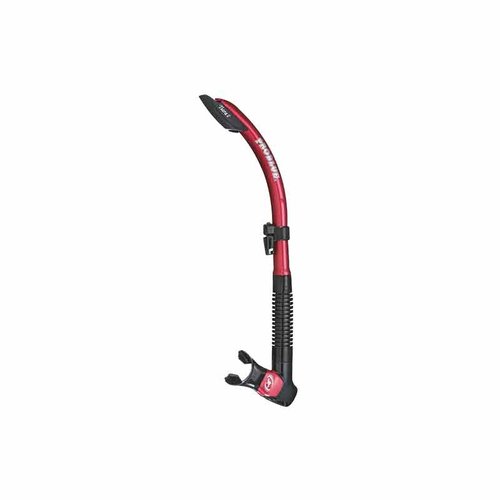
A snorkel is a device used for breathing air from above the surface when the wearer’s head is face downwards in the water with the mouth and the nose submerged. It may be either separate or integrated into a swimming or diving mask.
The integrated version is only suitable for surface snorkeling, while the separate device may also be used for underwater activities such as spearfishing, freediving, fin swimming, underwater hockey, underwater rugby and for surface breathing with scuba equipment.

Swimmers Snorkel
A swimmer’s snorkel is a tube bent into a shape often resembling the letter “L” or “J”, fitted with a mouthpiece at the lower end and constructed of scuba light metal, rubber or plastic. The snorkel may come with a rubber loop or a plastic clip enabling the snorkel to be attached to the outside of the head strap of the diving mask. Although the snorkel may also be secured by tucking the tube between the mask-strap and the head, this alternative strategy can lead to physical discomfort, mask leakage or even snorkel loss.

Snorkels constitute respiratory dead space. When the user takes in a fresh breath, some of the previously exhaled air which remains in the snorkel is inhaled again, reducing the amount of fresh air in the inhaled volume, and increasing the risk of a build-up of carbon dioxide in the blood, which can result in hypercapnia. The greater the volume of the tube, and the smaller the tidal volume of breathing, the more this problem is exacerbated.

A smaller diameter tube reduces the dead volume, but also increases resistance to airflow and so increases the work of breathing. Including the internal volume of the mask in the breathing circuit greatly expands the dead space. Occasional exhalation through the nose while snorkeling with a separate snorkel will slightly reduce the buildup of carbon dioxide, and may help in keeping the mask clear of water, but in cold water it will increase fogging. To some extent the effect of dead space can be counteracted by breathing more deeply and slowly, as this reduces the dead space ratio and the work of breathing.
- Display 16 Products per page














